Whether your goal is to become self-reliant by going off-grid, you want to be more environmentally friendly, or you are looking for a Bug Out Location for disaster preparedness, an off-grid water system should be your first priority.
There are 3 primary sources of water when living off grid:
- A sustainable natural source of water
- A well
- Rainwater harvesting
Here’s what you need to know about them to start going off-grid.
1. Natural Sources of Water
It isn’t enough to have a natural source of water nearby. That water source needs to be sustainable. By “sustainable,” I mean the water will always be there. Streams often dry out in the summertime. Even large lakes can dry out, and rivers could be diverted.
In a basic off-grid setup, you might have your home next to your water source. Every morning, you’d go out with a bucket to collect the water you need for the day. Water for cooking and drinking would need to be treated with a filter or boiling.
This is how millions of people around the globe already live. Yes, it is tedious to haul water and treat it constantly. Many people skip the treatment step, which is one reason that there are over 2 million waterborne disease deaths each year.
Forget heart disease! Waterborne disease is the world’s #1 killer.
Dying of diarrhea seems like a terrible way to go, so please don’t drink untreated water.
A pump is one solution for bringing water from nearby water to your property. There are also non-electric ways to deliver water from natural sources. These “water lifts” are beneficial when you need large quantities of water, such as for agriculture.
Below are just some of the devices that can be constructed for channeling water.
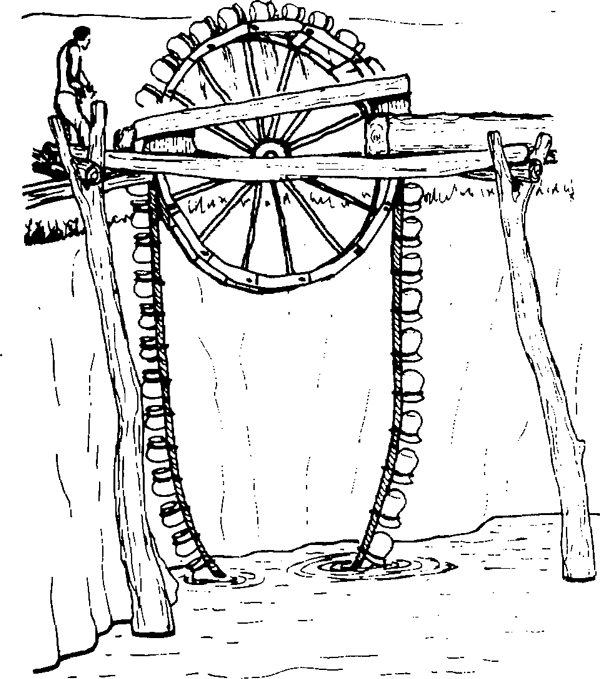
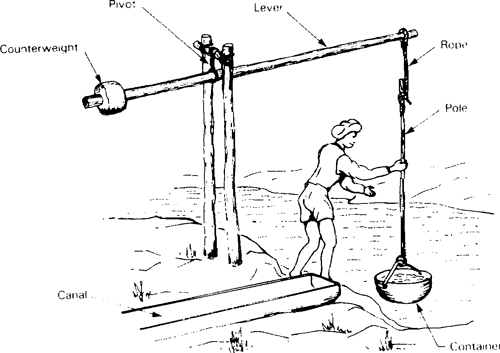
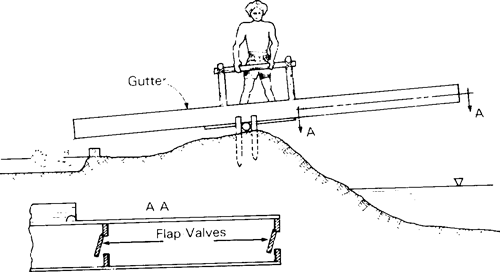
2. Well Water
The majority of the earth’s freshwater is below its surface. Digging a well allows you to access this fresh water.
Better yet, much of the contaminants have been removed from the water as it filtered through the layers of ground.
So, well water can be relatively clean (though it still needs testing and treatment).
Read more about the best well water filtration systems
There are three main types of wells that you can use.
Dug Wells
When you think of a well, this is probably what you imagine: a hole in the ground with a cute little wall and roof over it. You throw a bucket down into the well and pull up water.
Dug wells don’t go very deep into the earth, so they must be over an aquifer close to the earth’s surface. The groundwater could quickly dry up, leaving you without a water source.
Because you won’t get much water from aquifers so close to the surface, they are only really suitable for drinking water and not for agricultural use.
Drilled Wells
This is a more modern approach to well water. Instead of digging the well by hand, machinery is used to dig a very deep, narrow hole into the ground.
Because the well hole goes down much deeper – up to 3000 feet – it goes through more than one aquifer in the ground. The deeper aquifer will have more water, and the water will be cleaner.
You will need some sort of off-grid water pump to get the water out of the ground. There are both manual and powered pumps.
Driven Wells
These types of wells are made by driving a special pipe into the ground. The pipe is perforated and has a pointy end to facilitate the drilling. There are numerous methods of drilling the pipe into the ground. Some of these include:
- Percussion driving
- Water injection driving
- Undercutting driving
To dig a well, you can’t just start digging and hope you hit water. Ideally, you thought about this before buying your property and know there are “sweet spots” for water underneath it. You can find this out by consulting a geologist or the local state geological survey office.
Below is an image of a hand-powered water pump that could be used on a well.
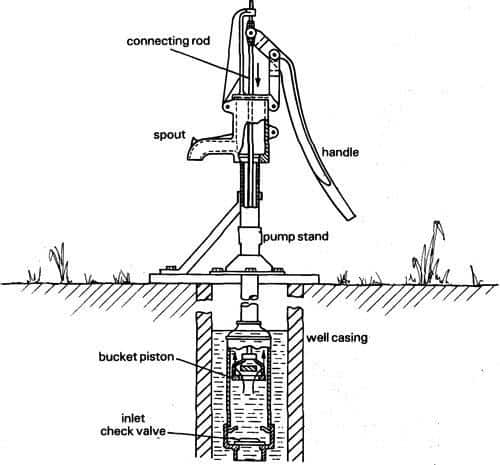
Well Pumps
Unless you want to haul up buckets of water, you’ll need a pump to access the water in your well. For more on well pumps, read:
- Best Hand Pumps for Shallow and Deep Wells
- How to Install a Well Hand Pump
- How to Install a Shallow Well Jet Pump
- Priming a Well after a Power Outage
3. Rainwater Harvesting
I’m thrilled to say that rainwater harvesting is becoming very popular. Increasingly, more people want to take advantage of what nature gives them and become less reliant on the municipal water supply. Some towns are even encouraging residents to start harvesting rainwater.
Rainwater harvesting can be as simple as putting a large barrel underneath your drain spouts to collect the rain that flows off your roof. However, this rain will fill your rooftop with debris and will quickly grow mold and bacteria.
The water may be suitable for agriculture, but you won’t be able to use it for drinking.
You’ll need a bit more complex setup to use rainwater for drinking and other home uses.
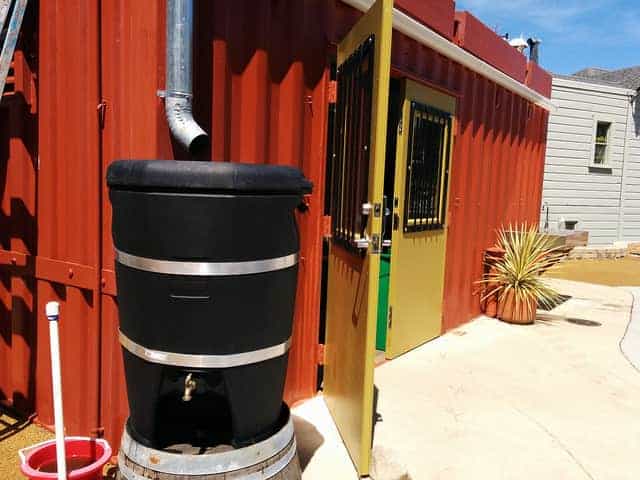
To learn more about rainwater harvesting, read:
- Rainwater Harvesting 101: How to Get Started
- Calculator: How Much Rainwater Can Your Roof Collect
- How to Collect Rainwater without Gutters
- Best Rainwater Downspout Diverters
Are you living off grid? What is your off grid water system? Let us know in the comments below.
“rain barrel” (CC BY-ND 2.0) by Liz Henry



Thinking about what must be done to live on the five acres I have in Witch Well, AZ. Previously lived on thirty acres about four miles away. I had solar panels, wood stove, propane heater and about 5,000 gallon water storage. Besides gutters for collecting rain water I had a 3/4 ton truck and a trailer to haul water as needed.
We would be starting over from scratch.
I just moved to Nisiki Alaska from Mississippi I buy my water in 5 gallon water jugs